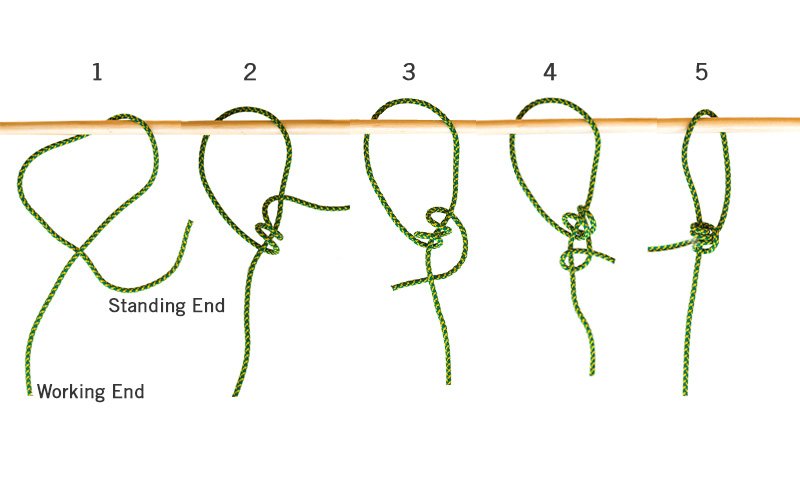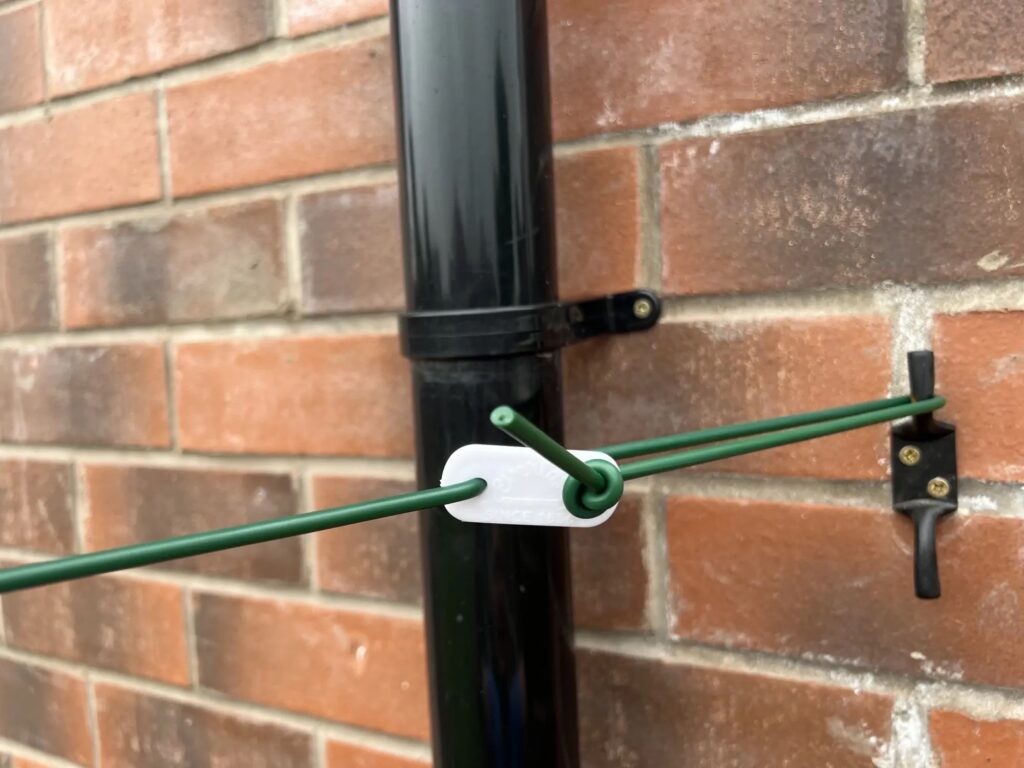
When it comes to natural ropes, jute and sisal stand out as popular choices. Each derived from distinct plants and possessing unique qualities, these ropes serve a multitude of purposes across various uses and applications.
But what are they, and what are the differences between the two?
Join us as we unravel the world of jute and sisal ropes, exploring the defining characteristics of jute and sisal rope, their common uses, and the key differences between the two, shedding light on their unique qualities and practical applications that make them indispensable in various settings.
What is jute rope?
Jute rope is a type of rope made from the long, natural, shiny vegetable fibres of the jute plant, or corchorus genus, which is primarily grown in India and in Bangladesh. Jute rope typically has a natural, golden-brown colour with a slightly fuzzy texture.
What are the characteristics of jute rope?
Jute rope has a wide range of characteristics, making it the perfect choice for many different uses. These include:
1. Strength
Jute rope is reasonably strong, though it is not as strong as ropes made from synthetic fibres. Jute rope is most suitable for moderate tasks where strength and durability are required.
2. Flexibility
Jute rope is flexible and pliable, making it easy to handle and tie knots. This flexibility is beneficial in various applications, from crafts to practical uses.
3. Softness
Compared to other natural fibres, jute rope is softer to the touch. This characteristic makes it comfortable to handle and less abrasive on surfaces and the hands.
4. Moisture absorption
Jute rope has moderate moisture absorption properties. Whilst it can absorb moisture, prolonged exposure to water can weaken the fibres and cause them to rot over time.
5. Biodegradability
Jute rope is biodegradable, meaning it can naturally decompose over time without causing harm to the environment. This makes it a sustainable choice for eco-conscious projects.
6. Versatility
Jute rope is versatile and finds applications across various industries and settings, including crafts, home décor, gardening, packaging, and more.
7. Grip
The natural texture of jute rope provides a good grip, making it suitable for tying and securing tasks, along with keeping a tight hold in the hands.
8. Aesthetic appeal
Jute rope adds a natural and rustic charm to decor and craft projects, making it popular in rustic and bohemian styles.
H4: 9. Environmental impact
Jute cultivation for jute rope requires fewer pesticides and fertilisers, compared to other crops – contributing to a lower environmental footprint.
10. Cost effectiveness
Jute rope is generally more affordable compared to ropes made from synthetic fibres, making it an economical choice for various applications.
Common uses for jute rope
Jute rope finds a wide range of practical and decorative uses, including:
1. Crafts and DIY projects
Jute rope, along with jute craft twine, can be used for creating macrame wall hangings, plant hangers, and other intricate twine craft ideas. It can also be fashioned into bracelets, necklaces, and other accessories.
2. Gardening and agriculture
Jute garden twine can be used for tying plants and supporting vines in gardens, whereas jute rope is often employed to create trellises and supports for climbing plants.
3. Packaging and wrapping
Jute rope and twine can be used as a natural and eco-friendly alternative for gift wrapping and packaging, along with being incorporated into the construction of sacks and bags for carrying and storing agricultural produce and other goods.
4. Pet accessories
Jute rope is often used to make chew toys and tug-of-war toys for pets, like dogs. It can also be wrapped around scratching posts in cat-friendly homes, due to its natural texture.
5. Outdoor activities
Jute rope can sometimes be used for decorative purposes on boats and yachts, as well as for securing items on deck. It can also be used in camping, such as for tying down tents, creating makeshift clotheslines, and other camping applications.
6. DIY furniture and accessories
Jute rope is sometimes used in upholstery for chairs and stools, adding texture and durability. It can also be used to create handles and pulls for drawers and cabinets.
7. Educational and training purposes
Jute rope is often used in educational settings and training programs, for those learning different types of knots and their applications. This is because jute is soft on the hands, flexible and has a good grip when in knots.
What is sisal rope?
Sisal rope is a type of natural rope made from the fibres of the sisal plant, or agave sisalana, which are extracted from the long leaves of the sisal plant. Sisal rope typically has a natural, rustic appearance with a pale, creamy colour, with a rough and coarse texture.
What are the characteristics of sisal?
Sisal rope has many unique characteristics, making it a popular choice for many different applications. These characteristics include:
1. Strength
Sisal rope is strong and capable of handling substantial weight and tension. This strength makes it suitable for tasks requiring heavy lifting and binding.
2. Durability
It is highly durable, with good resistance to abrasion and wear. This durability ensures a long lifespan, even with frequent use.
3. Biodegradability
Being a natural fibre, sisal is biodegradable and environmentally friendly. It breaks down over time, without harming the environment.
4. Water resistance
Whilst not completely waterproof, sisal rope has a moderate resistance to water and can be used in damp conditions. However, prolonged exposure to moisture can weaken the fibres, so it’s best used in environments where it can dry out between uses.
5. Resistance to decomposition
Sisal rope resists degradation from exposure to saltwater, making it suitable for marine applications. However, it can degrade over time if continuously exposed to moisture and microbial activity.
6. Texture and grip
The coarse texture of sisal rope provides excellent grip, making it easy to handle and tie knots. This property is particularly useful in applications where a firm hold is required.
7. Flexibility
While sisal rope is strong and stiff, it maintains a degree of flexibility – allowing it to be used effectively for binding and tying.
8. Heat resistance
The sisal fibres in the rope have a natural resistance to heat, which helps prevent melting or damage under high temperatures, though they can still burn.
9. Aesthetic appeal
Sisal rope has a natural, rustic appearance with a pale, creamy colour. This makes it popular for decorative uses, crafts, and landscaping projects.
10. Cost effectiveness
Sisal rope is relatively inexpensive compared to synthetic ropes, making it an economical choice for many applications.
Common uses for sisal rope
There are many different applications for sisal rope, such as:
1. Agriculture
Sisal rope is often used for binding hay bales, tying plants, and securing loads on farms. However, it can also be utilised in making halters, leads, and other animal restraints.
2. Marine
Sisal rope is ideal for mooring boats and securing them to docks due to its resistance to saltwater. It can also be used in the construction of traditional fishing nets and lines.
3. Construction and landscaping
Sisal rope is sometimes employed for lashing and securing scaffolding poles, in construction and landscaping, as well as used in creating barriers and nets for soil erosion control on slopes, and in garden barriers and decking to define garden beds and pathways.
4. Crafts and DIY projects
Sisal rope, as well as sisal twine, is popular in making macrame projects like plant hangers, wall hangings, and decorative items. It can also be used in eco-friendly gift wrapping, creating rustic decorations, and embellishing furniture.
5. Pet products
Sisal rope can be found in many pet products, including durable pet toys for chewing and playing, and can be wrapped around cat scratching posts and pads due to its rough texture.
6. Industrial uses
Sisal rope can be used in securing and bundling heavy packages and materials, as well as in securing cargo during transport.
7. Outdoor activities
Sisal rope is often used in camping, such as in setting up tents, hammocks, and other camping gear. It is also used in making sturdy rope swings and climbing ropes for outdoor play areas.
8. Emergency uses
Sisal rope can be employed in rescue scenarios, for use in pulling and securing individuals or objects.
Key differences: jute vs sisal
So what are the key differences between jute rope and sisal rope?
Plant source
Jute
Jute is derived from the corchorus genus of plants. These plants are mainly cultivated in India and Bangladesh.
Sisal
Sisal comes from the agave sisalana plant, which is native to Mexico but is now cultivated in various tropical and subtropical regions around the world, including Africa and Brazil.
Appearance
Jute
Jute fibres are softer and have a shiny, golden-brown colour. They have a slightly fuzzy texture and are often used for their natural aesthetic appeal.
Sisal
Sisal fibres are coarser and stiffer, with a creamy white to yellowish colour. They have a rougher texture compared to jute.
Strength and durability
Jute
Jute fibres are moderately strong, but are softer and less durable compared to sisal. They are suitable for lighter tasks and applications where flexibility and softness are desired.
Sisal
Sisal fibres are very strong and durable – much more so than jute. They have excellent abrasion resistance and are capable of withstanding heavy-duty applications as marine ropes and agricultural twine.
Moisture resistance
Jute
Jute has moderate moisture absorption properties. It can absorb water, which can weaken the fibres over time if exposed to prolonged moisture.
Sisal
Sisal is more resistant to moisture compared to jute. It is commonly used in marine environments and for outdoor applications where exposure to moisture is frequent.
Environmental impact
Both jute and sisal are made with natural fibres and are biodegradable, making them environmentally friendly choices. However, jute cultivation is generally considered more sustainable, due to its lower water and pesticide requirements compared to sisal.
Cost
Jute
Jute is usually more affordable than sisal, due to lower production costs and widespread cultivation.
Sisal
Sisal tends to be more expensive than jute due to its tougher fibres and specialised cultivation requirements.
Frequently asked questions about sisal and jute
Which sheds more, sisal or jute?
Jute tends to shed more than sisal, due to its softer and less durable fibres.
What happens to jute when it gets wet?
When jute gets wet, it releases natural oils that change the colour to a dark brown. It also causes the fibres to break down, and can start the decomposition process.
Is jute OK for outdoors?
Jute is preferred for indoor use, as it is more susceptible to moisture compared to sisal. Sisal, on the other hand, is more versatile.
What is a cheaper alternative to sisal?
Jute is generally considered to be a cheaper alternative to sisal, but that depends on what you are planning on using the sisal for and whether it is an appropriate alternative.
Is sisal or jute better for cats?
Sisal is often a better material for use with cats, such as on scratching poles, compared to jute. This is because it is coarser and more durable, as well as less prone to fraying.
When it comes to ropes and twines, we’d like to think that we know a thing or two. Head over to our handy Rope Source blog for more information about all things rope, or contact our friendly team for some expert advice!











